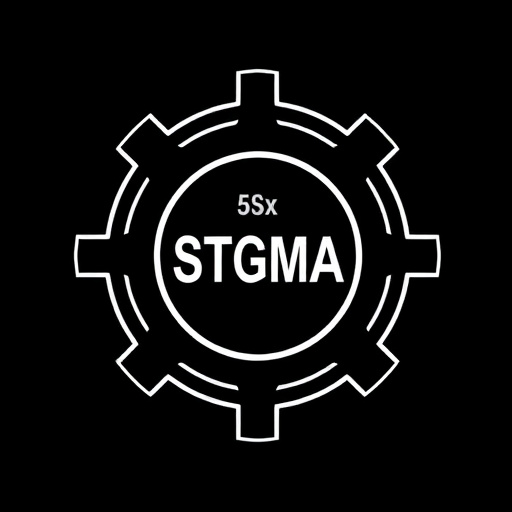Six Sigma is a data-driven process improvement methodology crucial for industries like healthcare and manufacturing where precision is paramount. Integrating Six Sigma into product recall management streamlines operations, enhances quality control, and ensures regulatory compliance through systematic analysis of processes. By leveraging tools like DMAIC, organizations can identify root causes of defects, rectify them quickly, and continuously improve based on measurable KPIs like response time, recovery rates, and customer satisfaction, ultimately boosting consumer confidence in product safety.
In an era where product quality and safety are paramount, integrating Six Sigma methodologies with regulatory compliance is vital for effective recall management. This article explores how Six Sigma, a data-driven approach to process improvement, can enhance the responsiveness and efficiency of recall operations. We delve into key strategies, tools, and metrics that align Six Sigma projects with recall management, ultimately ensuring consumer protection and brand reputation. Discover how this synergistic combination drives continuous improvement in product safety.
- Understanding Six Sigma and Its Role in Process Improvement
- The Importance of Regulatory Compliance in Product Recalls
- Aligning Six Sigma Projects with Recall Management Strategies
- Implementing Six Sigma Tools for Effective Recall Response
- Measuring Success: Evaluation and Continuous Improvement
Understanding Six Sigma and Its Role in Process Improvement

Six Sigma is a data-driven methodology focused on process improvement and quality enhancement. It aims to reduce defects and variability in business processes, ultimately leading to increased customer satisfaction. By employing statistical tools and techniques, Six Sigma projects identify and eliminate root causes of problems, ensuring consistent and efficient operations. This method is particularly valuable in industries where product quality and safety are paramount, such as healthcare and manufacturing.
In the context of recalls, Six Sigma can play a pivotal role in regulatory compliance. It helps organizations systematically analyze their processes, identify potential risks, and implement effective control measures. By following a structured approach, companies can swiftly pinpoint issues, minimize the impact of defects, and efficiently manage recall situations. The data-centric nature of Six Sigma ensures that decisions are based on facts, leading to more successful outcomes in meeting regulatory requirements.
The Importance of Regulatory Compliance in Product Recalls

In today’s highly regulated environment, ensuring regulatory compliance during product recalls is paramount for any manufacturer or distributor. Non-compliance can lead to severe consequences, including legal penalties, loss of consumer trust, and significant financial setbacks. Therefore, integrating Six Sigma methodologies into recall processes is a strategic move to streamline operations, enhance quality control, and minimize errors that could result in non-adherence to regulatory standards.
Six Sigma’s data-driven approach and focus on process improvement enable organizations to systematically identify and eliminate defects related to product recalls. By employing statistical tools and techniques, companies can efficiently trace the root causes of issues, implement effective corrective actions, and prevent future occurrences. This proactive strategy ensures that recall management is conducted smoothly, effectively, and in line with regulatory requirements, ultimately safeguarding public health and safety.
Aligning Six Sigma Projects with Recall Management Strategies

In the realm of product recall management, integrating Six Sigma methodologies can significantly enhance efficiency and effectiveness. Six Sigma projects should be aligned with recall strategies to ensure a structured and data-driven approach. By utilizing Six Sigma’s focus on process improvement and statistical analysis, companies can identify and rectify root causes behind defective products or non-compliance issues, thereby minimizing the need for costly recalls.
Aligning Six Sigma initiatives with recall management involves careful planning and collaboration between quality assurance teams and regulatory affairs departments. This collaborative effort ensures that projects are targeted at areas prone to non-compliance, such as manufacturing processes, quality control checks, and documentation procedures. By consistently applying Six Sigma principles, organizations can create a robust framework for proactive recall prevention, enhancing their overall regulatory compliance posture.
Implementing Six Sigma Tools for Effective Recall Response

Implementing Six Sigma tools offers a structured approach to enhance the effectiveness of recall response strategies. By leveraging techniques like DMAIC (Define, Measure, Analyze, Improve, Control), organizations can systematically identify root causes contributing to product recalls, ensuring faster and more efficient resolution. This data-driven methodology allows for a deep understanding of the issues at hand, enabling companies to make informed decisions that mitigate risks and improve overall quality management.
Additionally, Six Sigma’s focus on process optimization ensures recall processes are streamlined and consistent. It promotes a culture of continuous improvement, where lessons learned from past recalls are implemented to prevent future occurrences. This proactive strategy, combined with the power of data analysis, enhances regulatory compliance and boosts consumer confidence in the product safety measures taken by manufacturers.
Measuring Success: Evaluation and Continuous Improvement

Measuring success is a cornerstone of Six Sigma, and it plays an equally vital role in regulatory compliance during recalls. Organizations should establish clear metrics to evaluate the effectiveness of their response, ensuring that every step taken aligns with the desired outcomes. This could involve tracking key performance indicators (KPIs) such as time taken to issue a recall, product recovery rates, and customer satisfaction levels post-recall. By regularly analyzing these KPIs, companies can identify areas for improvement, pinpoint potential bottlenecks, and make data-driven decisions.
Continuous improvement is another hallmark of Six Sigma. Once the initial recall process is underway, organizations should use this as an opportunity to refine their procedures. Learning from each recall scenario, they can implement changes that enhance efficiency, reduce costs, and improve overall product quality. This iterative approach ensures that every subsequent recall is better managed, leading to more effective product safety measures and stronger consumer trust.
Integrating Six Sigma methodologies into regulatory compliance for product recalls is a powerful strategy for enhancing efficiency and effectiveness. By understanding the core principles of Six Sigma, recognizing the critical role of regulatory adherence in recalls, aligning projects with recall management, and utilizing specific tools, organizations can streamline their response. Continuous evaluation and improvement ensure that these processes remain robust and adaptable to changing requirements, ultimately safeguarding public health and bolstering an organization’s reputation.
